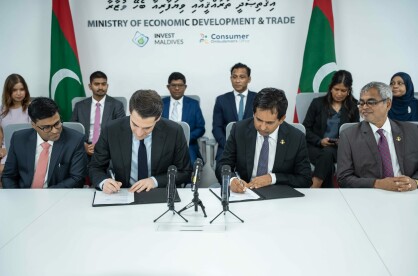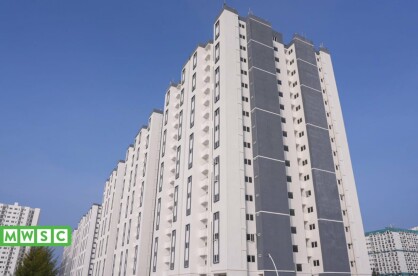Maldives unsustainable debt situation
The total active loans from external donors have reached USD 3.3 billion.

The total active loans from external donors have reached USD 3.3 billion.

Maldives embarked on major democratic reforms on the political front in 2008, with its adoption of a new constitution, and the first multi-party elections, resulting in the first democratically elected President sworn-in by November 11, 2008. President Nasheed inherited an economy with a low tax base, and limited sources of government revenue. Under his leadership, a new tax system was introduced, introducing goods and services tax, business profit tax, and tourism GST. State revenues increased significantly, and so did expenditures and debt.
By the time Nasheed’s government ended, total government debt has reached MVR25.5 billion from MVR 9.7 billion at end of 2008. Debt per head increased 146 percent to MVR 77,223 per head by end of 2012, which was at MVR31,368 per head at the end of 2008.
After a turbulent two years under presidency of Mohamed Waheed, in November 2013, President Yameen inherited an economy with total debt of MVR 28.4 billion, corresponding to 56 percent of GDP. By this time, the Fiscal Responsibility Law (FRL) was in place, bringing in limitations on financing government cashflow through the Maldives Monetary Authority (MMA). The law also prescribed limitations on the Debt to GDP levels, and required the Minister of Finance to submit the fiscal strategy, along with the Debt strategy report to the Parliament.
The country borrowed an additional MVR31.8 billion between 2014-2018 under the presidency of Yameen, as the government embarked on major infrastructure development projects; including the Male’-Airport-Hulhumale Bridge (Sinamale’ Bridge), the Velana Internation Airport runway, terminal, and seaplane terminal projects, Hulhumale’ phase 2 housing project, and Dharumavantha Hospital project. Total external borrowing by Yameen’s government increased by USD 584 million, and domestic debt increased by MVR 10.8 billion. With an additional MVR 12 billion in guarantees, the total debt by the of 2018 has reached MVR 60.3 billion, reaching 73 percent of GDP – higher than the 60 percent prescribed in the FRL.
With the objective of hedging the risks of high external borrowings, Yameen set up a Sovereign Development Fund (SDF), and set aside part of USD revenue of the government, along with airport development fees. The fund was supposed to be cushion for the debt obligations maturing in 2022-2023.
As per the latest debt data as at end March 2022, total outstanding debt has reached MVR 99 billion, with over USD 2.1 billion (MVR 33 billion) in external debt, MVR 52 billion in domestic debt, and MVR 14.1 billion in guarantees. Total debt to GDP has reached an alarming 113 percent of GDP.
Multilateral institutions like the World Bank, and other analysts have highlighted the issue of increasing sovereign debt, and risks of debt default, given the low level of reserves in the Maldives.
According to the published information by the Ministry of Finance, the total of active loans from external donors have reached USD 3.3 billion, leaving an undisbursed USD 1.2 billion. As this amount is disbursed, total debt will reach MVR 117 billion.

While 40 percent of total existing external debt is owed to the Indian Exim Bank, 15 percent is shared by the USD 500 mil Sukuk issued in 2021. As this amount will mature in 2026, it will require gradual build up of reserves, in order to avoid a major crisis.
Maldives needs to seriously consider reducing future debt commitments, considering the unsustainable existing debt stock of the country.



